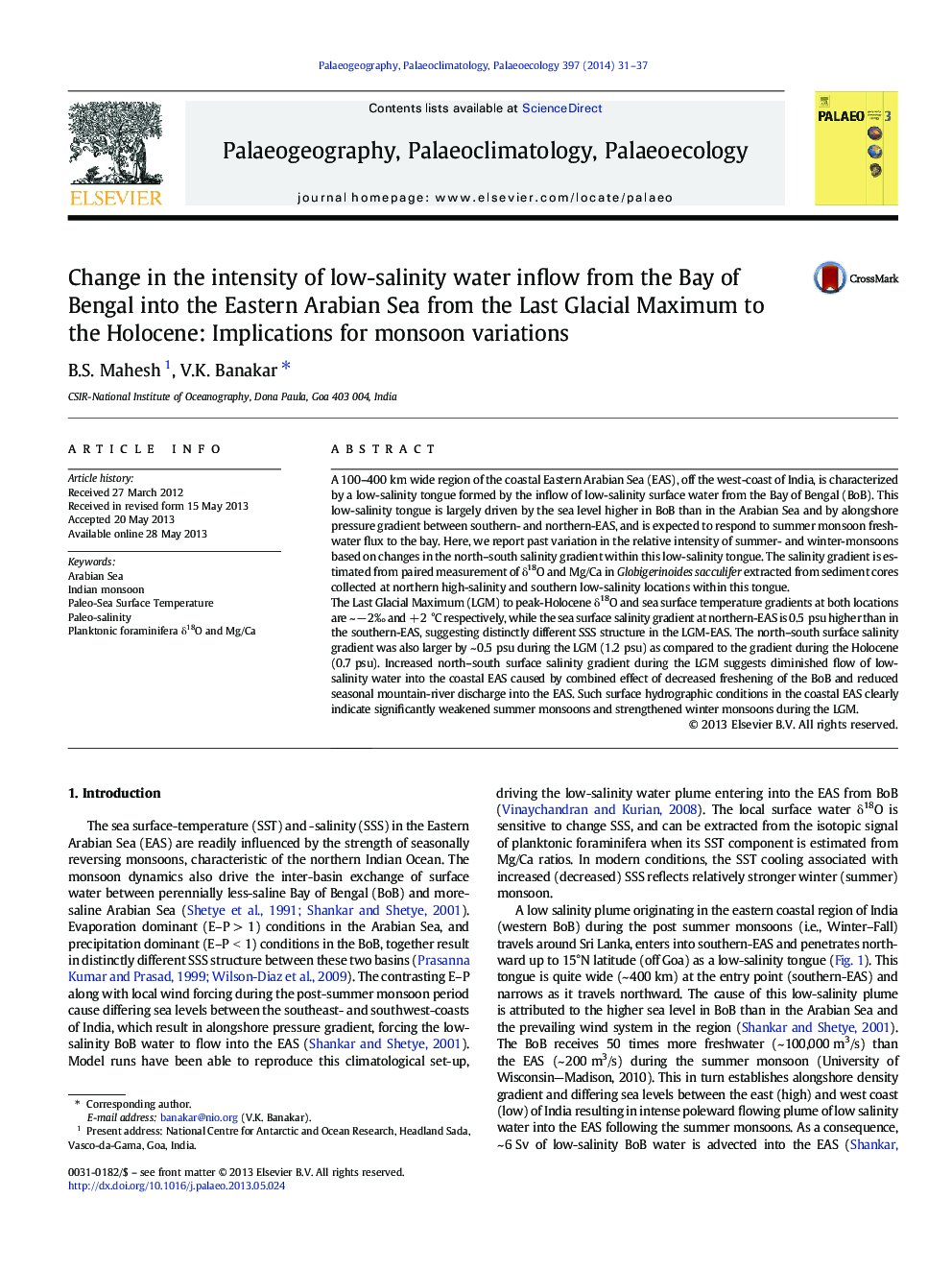| کد مقاله | کد نشریه | سال انتشار | مقاله انگلیسی | نسخه تمام متن |
|---|---|---|---|---|
| 4466357 | 1622193 | 2014 | 7 صفحه PDF | دانلود رایگان |
• Past changes in Low-salinity tongue of Eastern Arabian Sea responded to monsoons.
• Both in time and space the salinity structure of the tongue was different.
• Higher NS salinity gradient within the tongue in LGM suggests weak summer monsoons.
• Paired Mg/Ca T and d18O of calcite provide useful information on low-salinity tongue.
A 100–400 km wide region of the coastal Eastern Arabian Sea (EAS), off the west-coast of India, is characterized by a low-salinity tongue formed by the inflow of low-salinity surface water from the Bay of Bengal (BoB). This low-salinity tongue is largely driven by the sea level higher in BoB than in the Arabian Sea and by alongshore pressure gradient between southern- and northern-EAS, and is expected to respond to summer monsoon freshwater flux to the bay. Here, we report past variation in the relative intensity of summer- and winter-monsoons based on changes in the north–south salinity gradient within this low-salinity tongue. The salinity gradient is estimated from paired measurement of δ18O and Mg/Ca in Globigerinoides sacculifer extracted from sediment cores collected at northern high-salinity and southern low-salinity locations within this tongue.The Last Glacial Maximum (LGM) to peak-Holocene δ18O and sea surface temperature gradients at both locations are ~ − 2‰ and + 2 °C respectively, while the sea surface salinity gradient at northern-EAS is 0.5 psu higher than in the southern-EAS, suggesting distinctly different SSS structure in the LGM-EAS. The north–south surface salinity gradient was also larger by ~ 0.5 psu during the LGM (1.2 psu) as compared to the gradient during the Holocene (0.7 psu). Increased north–south surface salinity gradient during the LGM suggests diminished flow of low-salinity water into the coastal EAS caused by combined effect of decreased freshening of the BoB and reduced seasonal mountain-river discharge into the EAS. Such surface hydrographic conditions in the coastal EAS clearly indicate significantly weakened summer monsoons and strengthened winter monsoons during the LGM.
Journal: Palaeogeography, Palaeoclimatology, Palaeoecology - Volume 397, 1 March 2014, Pages 31–37
